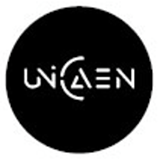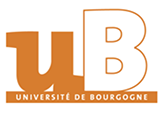Introduction
The University of Montpellier is located in the center of Montpellier, France. It is one of the oldest universities in the world and a member of the French University Excellence Program. It is also a member of the Coimbra Group, the European University Association (arqus), the World Association of French-speaking Universities, and the Mediterranean University Association (unimed).
Overview
Student size: There are more than 51,000 students on campus.
Faculty and staff: As of 2024, there are nearly 5,100 faculty and staff.
History
Early development: Montpellier was founded in the 10th century AD. In 1137, Montpellier founded the first medical school in Europe, followed by the establishment of a law school and a college of literature. In 1220, Cardinal Conrad von Urach established the first charter for the University of Montpellier. In 1289, Pope Nicholas IV established the University of Montpellier on the basis of the medical school.
Modern changes: After the "May Storm" in France in 1968, the University of Montpellier was divided into the First University (Medicine, Economics), the Second University (Natural Sciences) and the Third University (Humanities) in 1970. In 2015, the University of Montpellier I and the University of Montpellier II were reorganized to form the University of Montpellier, while the Faculty of Arts, Faculty of Arts, Faculty of Languages and Faculty of Humanities and Social Sciences of the University of Montpellier formed the University of Montpellier III.
Establishment time
The first charter was formulated by Cardinal Conrad von Urach in 1220, and it was officially established by Pope Nicholas IV in 1289.
School strength
Teaching quality: As a comprehensive university with a long history, it provides a wide range of disciplines and rich curriculum settings, covering all levels from undergraduate to doctoral. Its teaching focuses on the combination of theory and practice, cultivating students' comprehensive literacy and professional ability, and laying a solid foundation for students' future development.
Research level: It has 74 research institutes and conducts cutting-edge research in many fields, especially in ecology, agricultural science and other disciplines. In 2019, Reuters released the "World's Most Innovative Universities Ranking", the University of Montpellier ranked 2nd in France and 17th in Europe. In 2023, the "Shanghai Ranking of World Universities" released by Shanghai Jiaotong University ranked the university in the top 200 in the world.
Institutional nature
Public research university.
Educational philosophy
Focus on cultivating students' innovative ability and interdisciplinary literacy, emphasizing the combination of research and teaching, and encouraging students to actively participate in scientific research projects and practical activities to cultivate professionals with global vision and social responsibility, so that students can better adapt to social development and workplace needs.
Key laboratories and disciplines
Key laboratories: Such as L2C-Charles Coulomb Laboratory, Labex Nu Mev Laboratory, Commun Into Sea-Innovative Tools Under the Sea Laboratory, etc. These laboratories provide advanced research platforms and technical support for scientific research in related disciplines.
Key disciplines:
Ecology: Ranked 2nd in the world, the research of this discipline covers the structure and function of ecosystems, biodiversity protection, ecological environment restoration and other aspects, providing important theoretical support and practical solutions for solving global ecological problems.
Agricultural Science: Ranked 19th in the world, the school has profound academic accumulation and strong scientific research strength in the fields of agricultural biotechnology, agricultural sustainable development, plant science, etc., and is committed to promoting scientific and technological innovation and development in the field of agriculture.
Medicine: The School of Medicine has a long history and is one of the oldest medical schools in the world. It has also made remarkable achievements in research and teaching in medical-related fields such as clinical medicine, medical technology, health chemistry and biological sciences, and has trained a large number of outstanding medical professionals.
Faculty
As of 2024, there are 17 faculties, including the Faculty of Law and Political Science, the Faculty of Economics, the Faculty of Education, the Faculty of Medicine, the Faculty of Dentistry, the Faculty of Pharmacy, the Faculty of Science, the Faculty of Sports Science and Technology, the Faculty of Administration, the National Higher Education and Education Institute - Montpellier College, the Faculty of Business Administration, IUT Montpellier Management Béziers, IUT Montpellier - Sete, Polytechnic University of Nîmes, Montpellier Environmental Research Observatory, Polytechnic Institute of Montpellier, etc.
Ranking
2024 QS World University Rankings: ranked 382nd.
2023 Academic Ranking of World Universities: ranked in the top 200 in the world, with Ecology ranked 2nd in the world and Agricultural Sciences ranked 19th in the world.
2024 Times Higher Education World University Impact Rankings: ranked 301-350.
Expenses
Tuition fees at French public universities are borne by the government, and students only need to pay a registration fee, which is generally around 170-300 euros for undergraduates and about 200-400 euros for masters and doctoral students. Around EUR.
Campus
Campus environment: Located in the center of Montpellier in southern France, the city is known as the "Sunshine City". The campus has a beautiful environment and a strong cultural atmosphere, providing students with a good learning and living environment.
Teaching facilities: It has modern teaching buildings, libraries, laboratories and other teaching facilities. The library has a rich collection of books and complete electronic resources, which provides strong support for students' learning and research.
Cultural heritage: The school emblem is inspired by the logo of the Guillem dynasty, the founder of Montpellier, symbolizing that the entire university community is a sharing of history and heritage, reflecting the school's long historical and cultural heritage.
-

University of Angers
-

University of Caen Normandy
-

University of Bordeaux
-

Claude Bernard University Lyon 1
-

CY Cergy Paris University
-

Clermont Auvergne University
-

University of Artois
-

University of Burgundy
-

Jean Moulin University Lyon 3
-

University of Franche-Comté
-

Mesoamerican University
-

Istmo University
-

Mariano Galvez University of Guatemala
-

Regional University of Guatemala
-

Galileo University
-

Francisco Marroquín University
-

Rafael Landívar University
-

University of the Valley of Guatemala
-

University of San Carlos of Guatemala
-

Technological Institute of Tlaxcala Plateau
-

Golfo University
-

Technological University of South Sonora
-

Technological University of Huejotzingo
-

Tizimín Institute of Technology
-

Chilpancingo Institute of Technology

